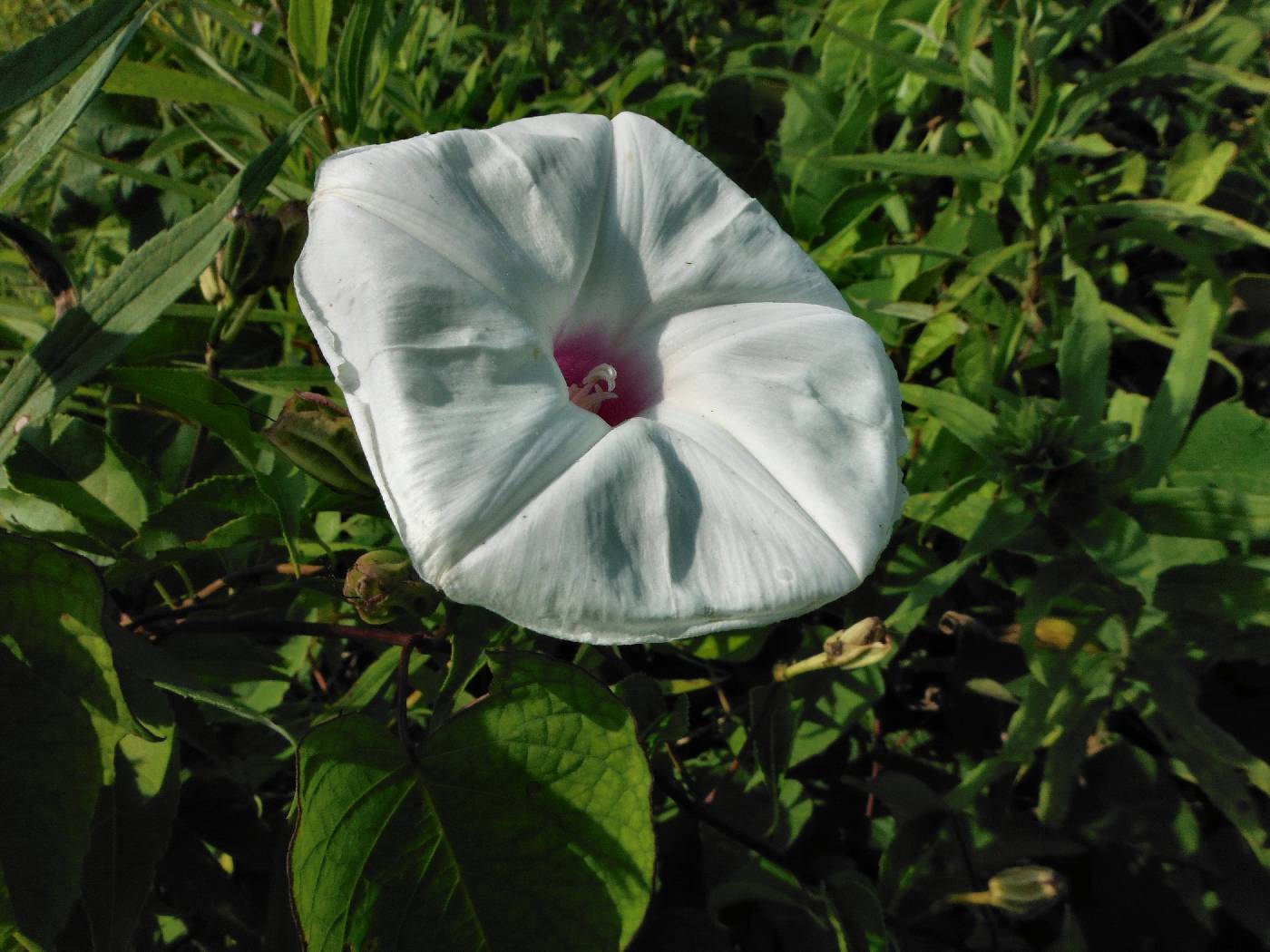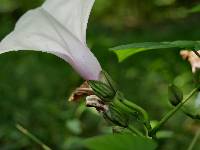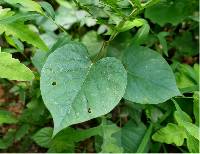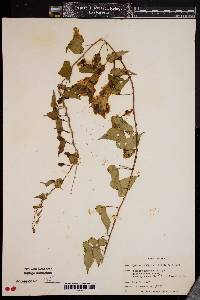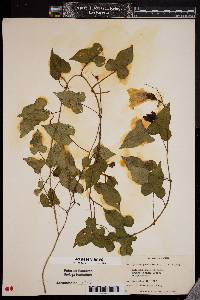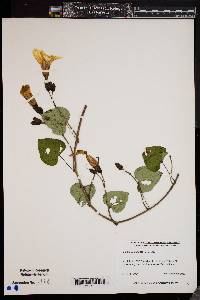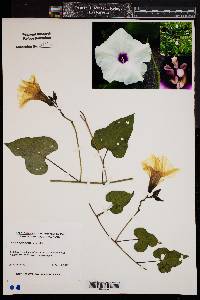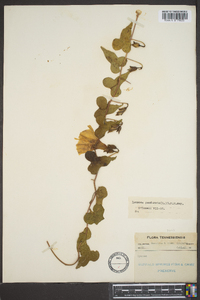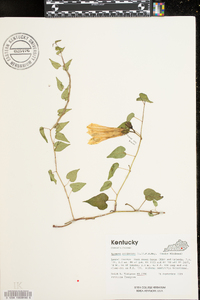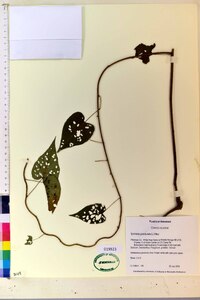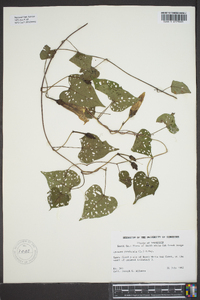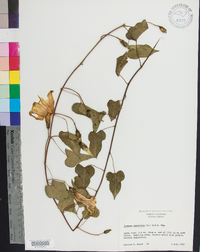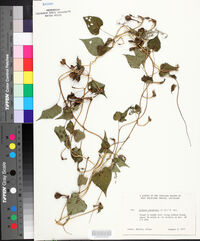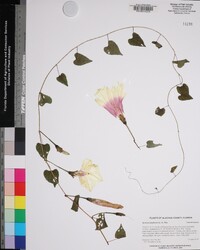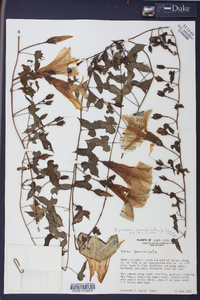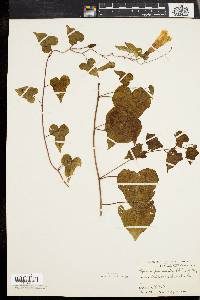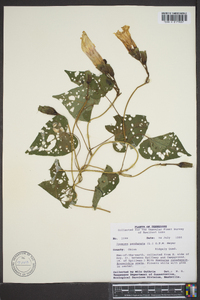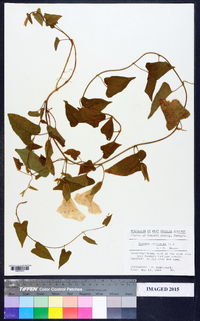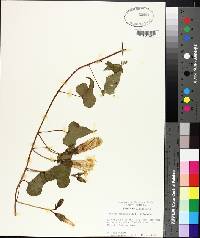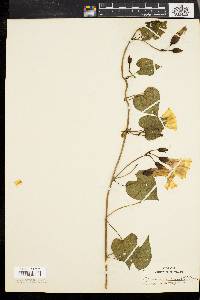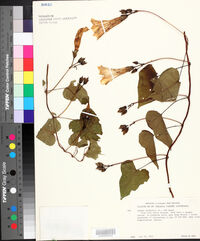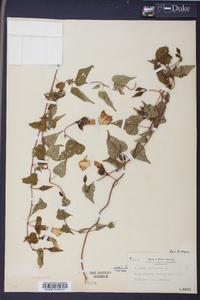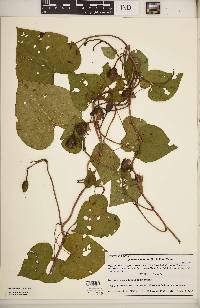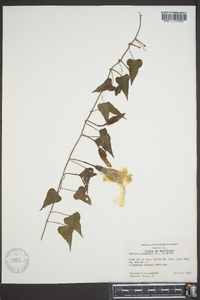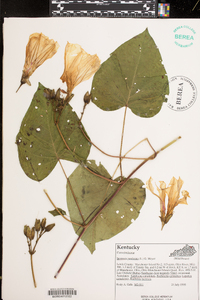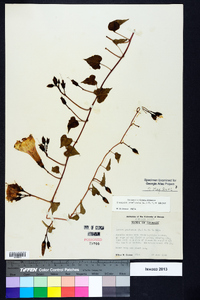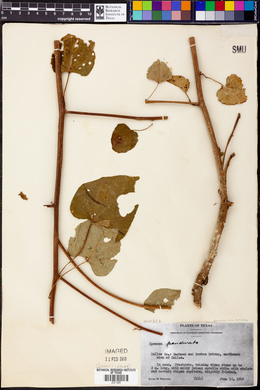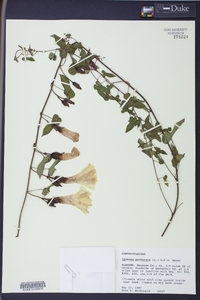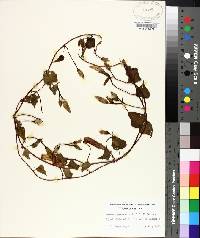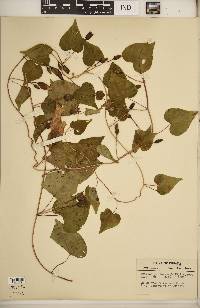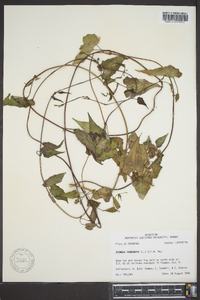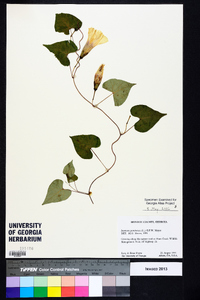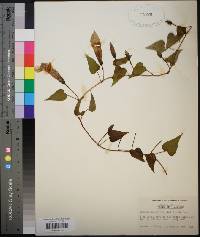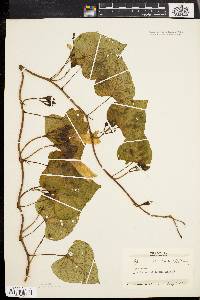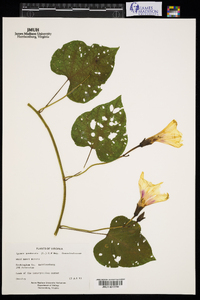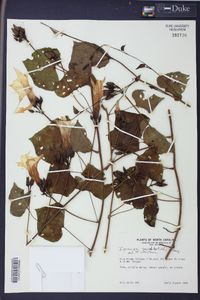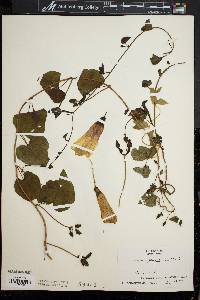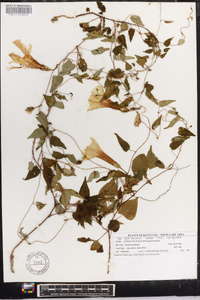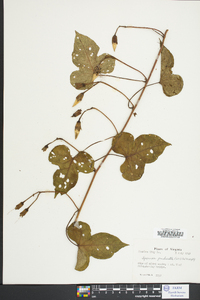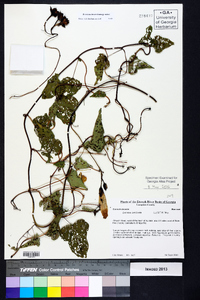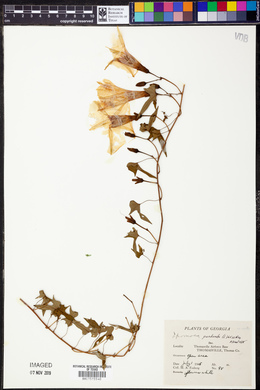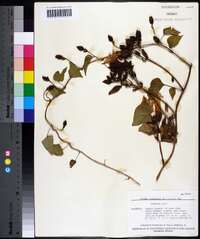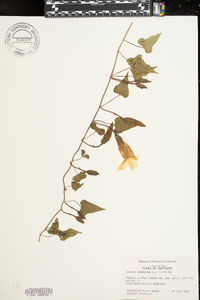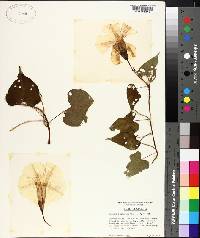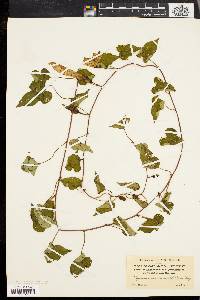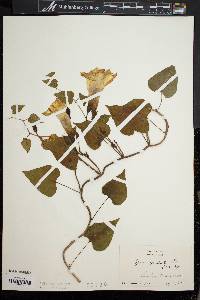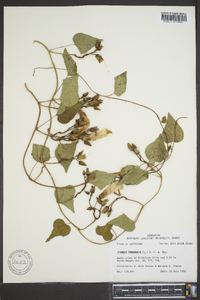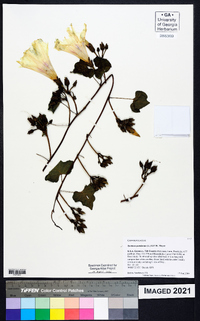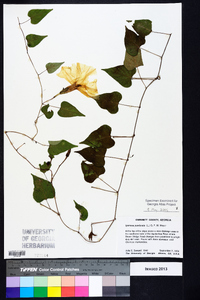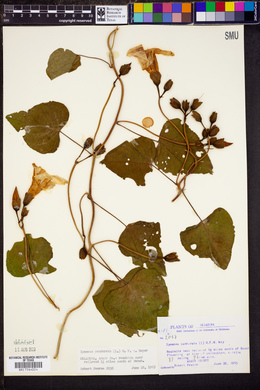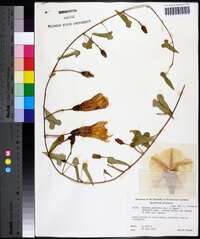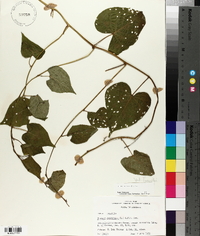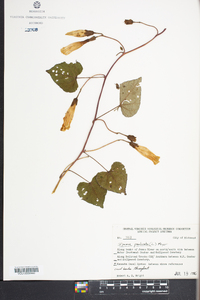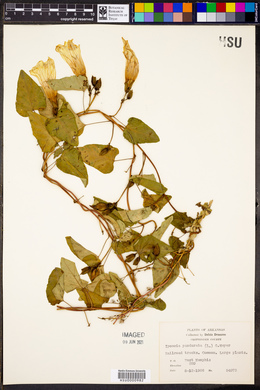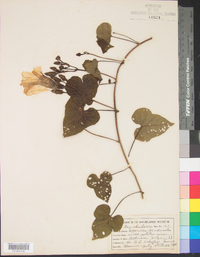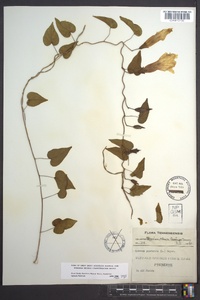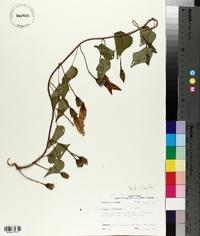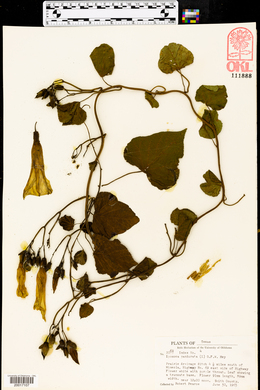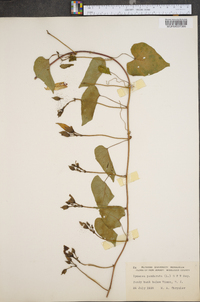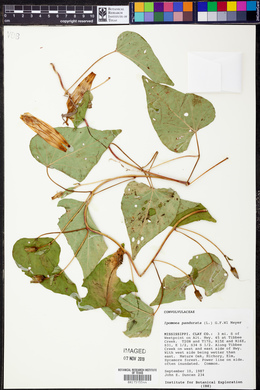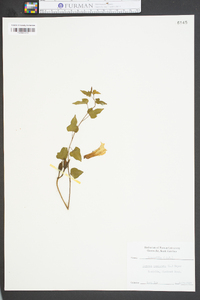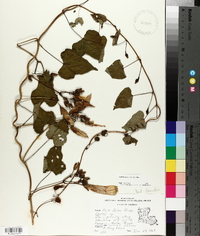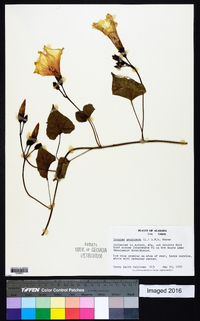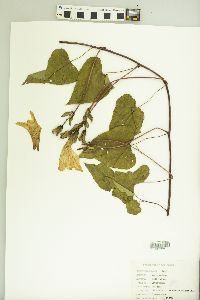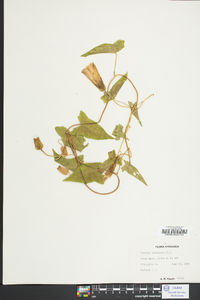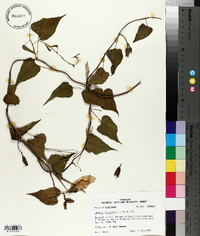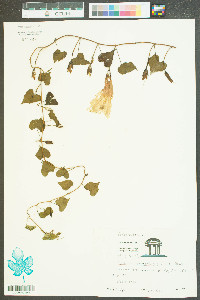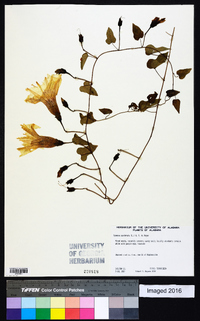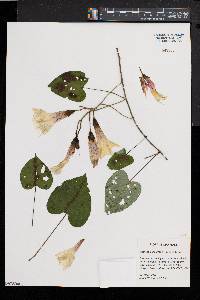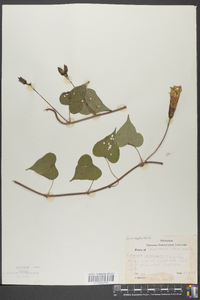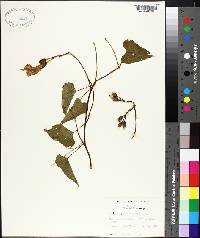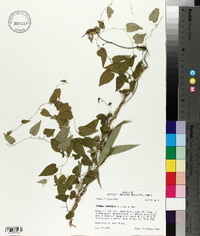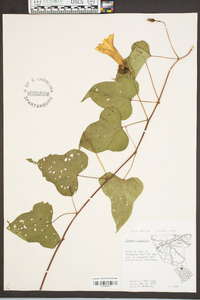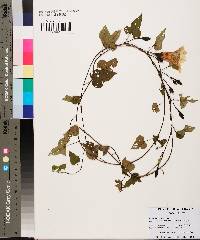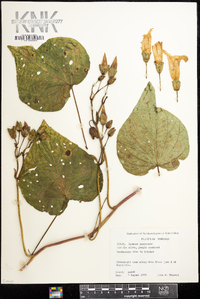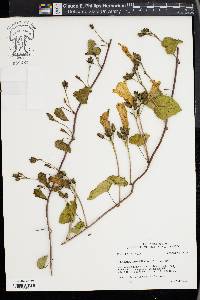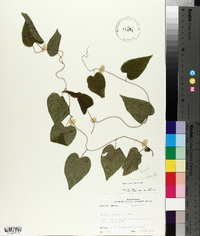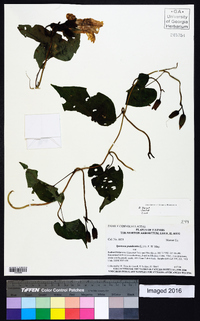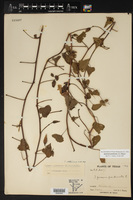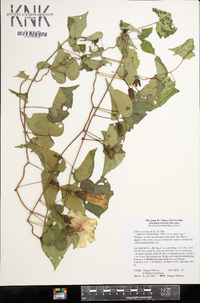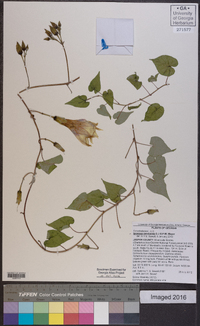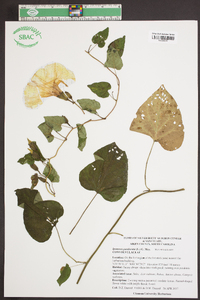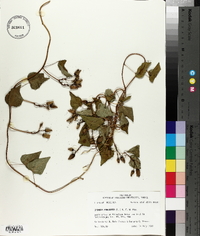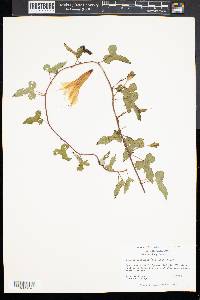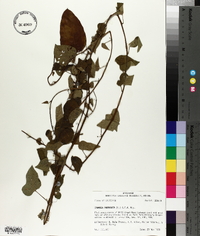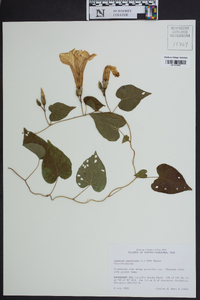
|
|
|
|
Family: Convolvulaceae
Man-of-the-Earth, more...bigroot morningglory, man of the earth
[Convolvulus ciliolatus Michx., moreConvolvulus panduratus L.] |
Perennial vine up to 5 m long Stem: trailing or twining, forking and branching often, strong, often purplish, more or less hairless, and if cut or broken then exuding a milky sap. Leaves: alternate, stalked, non-toothed, usually hairy below but sometimes both surfaces hairless, 5 - 15 cm long, heart-shaped with tapered pointed tip, sometimes slightly narrowed near the middle. Flowers: stalked, white with reddish purple throat, showy, 5 - 8 cm long, 7 - 10 cm broad, radially symmetric, funnel-shaped with flaring limb, and in clusters of one to seven terminating stout, stiff, long stalks from leaf axils at branch tips. Sepals: five, 1.3 - 2.3 cm long, egg-shaped or oblong with rounded to slightly pointed tips, hairless or with some short hairs on edges. Petals: five, but fused into a funnel with spreading limb, which may be shallowly five-lobed or merely wavy along edges. Stamens: five, attached to inside base of petal tube, not extending beyond petal tube. Pistil: with one, two-chambered, superior ovary; a single style shorter than the petal tube; and one stigma with two small, rounded lobes. Fruit: stalked, two- to four-valved, two-chambered, rounded capsules with two seeds per chamber. The seeds are hairy. Root: deeply buried, vertical, very large, tuber-like, 30 cm - 2 m long, up to 11 kg in weight. Similar species: Ipomoea pandurata is probably most similar to I. lacunosa, except that species has smaller and narrower flowers lacking coloring in the throat, the sepal edges are more consistently hairy, and it has a weak annual root system. Ipomoea purpurea may look similar, especially if it is a white-flowered form, however, that species has obviously hairy sepals, and a three-lobed stigma. Flowering: July to August Habitat and ecology: Occasional, usually localized to stream banks, thin woodlands, and sometimes in old fields. Occurence in the Chicago region: native Notes: The starchy edible roots of this plant are huge compared to the rest of the plant. Most common names for this species are in reference to its tuberous root, either as a sweet potato, a regular potato, or more interestingly as the “man of the earth”. The cultivated sweet potato, Ipomoea batatas, is a relative that is native to tropical South America. Etymology: Ipomoea comes from the Greek word meaning worm-like, possibly referring to the twining and twisting stems, or the twisted flower buds. Pandurata means fiddle-shaped, but it is uncertain to what this refers in this species. Author: The Field Museum Perennial from a large, deep-seated, tuber-like root; stems trailing or twining, to 5 m, glabrous or nearly so; lvs glabrous or more often hairy beneath, ovate, entire, acuminate, deeply cordate at base, 5-15 cm, rarely obscurely lobed or angled; peduncles stout, stiff, usually exceeding the subtending petioles, bearing 1-7 fls in a terminal cluster; sep ovate or oblong, 13-20 mm at anthesis, obtuse to broadly rounded, glabrous; cor white with red-purple center, 5-8 cm; ovary bilocular; 2n=30. Dry woods and thickets; Conn. to s. Ont., Mich., and Kans., s. to Fla. and Tex. June-Sept. Gleason, Henry A. & Cronquist, Arthur J. 1991. Manual of vascular plants of northeastern United States and adjacent Canada. lxxv + 910 pp. ©The New York Botanical Garden. All rights reserved. Used by permission. From Flora of Indiana (1940) by Charles C. Deam More or less frequent throughout the state although there are no records for the area north of the Kankakee River. It prefers moist soil along streams but is also found on washed slopes and infrequently in dry woodland. This species develops a tuber of enormous size at a great depth in the ground. The largest I have seen was about 24 inches long and about 5 inches in circumference in the middle. It was elliptic in shape. I was told of one that was of incredible size and I forbear to give dimensions for fear an error was made in identification or measurements. Vines 9 to 15 feet long are not uncommon and these crawl upon bushes 3 to 9 feet high. The variety and species have not been separated long enough to ascertain the range of either. In Indiana the ranges of the two are practically coextensive. The variety is distinct in our area and we have no intergrading specimens. The range of the species is taken from our manuals. …… Indiana Coefficient of Conservatism: C = 3 Wetland Indicator Status: FACU |

